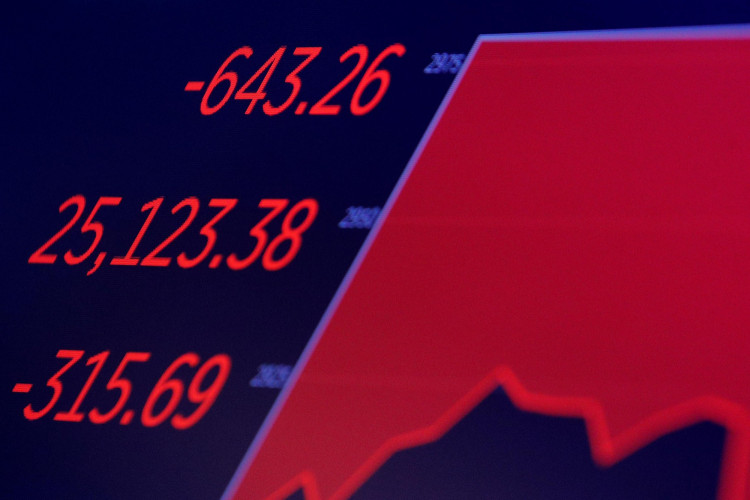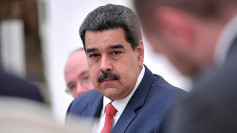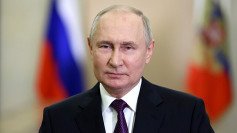Russians are scrambling to buy U.S. dollars after the Moscow Exchange suspended trading in dollars and euros. This abrupt move comes in response to fresh U.S. sanctions, intensifying economic pressure on Russia amid its ongoing conflict with Ukraine. Videos circulating on social media show long lines at currency exchange points, underscoring the immediate impact of these sanctions on Russian citizens.
The Russian central bank announced that exchange trading and settlements of deliverable instruments in U.S. dollars and euros were suspended effective June 13. This decision follows the U.S. Treasury's expansion of an executive order issued by President Joe Biden, allowing Washington to directly sanction foreign banks facilitating significant transactions for Russia. These sanctions aim to isolate Russia financially and limit its ability to sustain its military operations.
In a statement, the central bank assured citizens that all funds in U.S. dollars and euros in their accounts and deposits remain safe. However, the move to suspend central exchange trading means that banks, companies, and investors will now have to trade these currencies over the counter, a process typically less liquid and more opaque.
The immediate aftermath of the announcement saw a surge in demand for U.S. dollars. In St. Petersburg, a line formed at a currency exchange point following the news about the suspension of currency trading on the Moscow Exchange, according to the Russian Telegram channel Bankrollo. The channel, which has more than 300,000 subscribers, shared footage of the queues, highlighting the public's reaction to the sanctions.
The Moscow Exchange, Russia's primary financial marketplace, reiterated that companies and individuals could still buy and sell U.S. dollars and euros through Russian banks. "All funds in U.S. dollars and euros in the accounts and deposits of citizens and companies remain safe," the exchange stated. Despite these reassurances, the ruble's value against the dollar and euro plummeted, with some banks adjusting their exchange rates dramatically. For instance, Norvik Bank set a new dollar exchange rate at one point, buying dollars at 50 rubles and selling at 200.
The sanctions, part of a broader strategy to pressure Russia economically, are designed to increase the cost of Moscow's war efforts. Janet Yellen, the U.S. Treasury Secretary, emphasized the intent behind these measures. "Every day, Russia continues to mortgage its future to sustain its unjust war of choice against Ukraine," she said. The Treasury's actions aim to restrict Russia's access to foreign technology, equipment, software, and IT services, thus hampering its military and economic capabilities.
This latest round of sanctions reflects the U.S.'s ongoing commitment to curbing Russia's aggression. The Treasury highlighted that the new measures target the architecture of Russia's financial system, which has been reoriented to support its defense industry. These sanctions are part of a broader effort to diminish Russia's ability to benefit from its access to global financial systems and technology.
The economic fallout from these sanctions is evident in the Russian public's response. Many Russians, mindful of past crises where the ruble's value plummeted, hold significant savings in dollars and euros. The suspension of dollar and euro trading on the Moscow Exchange exacerbates fears of further devaluation of the ruble, leading to a rush to secure stable foreign currencies.
Moreover, the shift in trading dynamics on the Moscow Exchange has highlighted the growing role of the Chinese yuan in Russia's economy. With Moscow increasingly aligning its trade and political ties with Beijing, the yuan has become the most traded currency on the exchange. In May, the yuan accounted for 53.6% of all foreign currency traded on MOEX, surpassing the dollar.
The immediate impact of the sanctions is palpable, but the long-term effects remain to be seen. The Russian central bank had been preparing for such scenarios, modeling various sanctions impacts with market participants and infrastructure organizations. However, the sudden halt in dollar and euro trading represents a significant challenge for Russia's financial system.
As Russia navigates these turbulent economic waters, the resilience of its financial institutions and the public's response will be critical. The sanctions underscore the international community's resolve to pressure Moscow to end its aggressive actions in Ukraine. However, the path forward for Russia's economy remains uncertain, with the potential for further volatility and economic strain.






